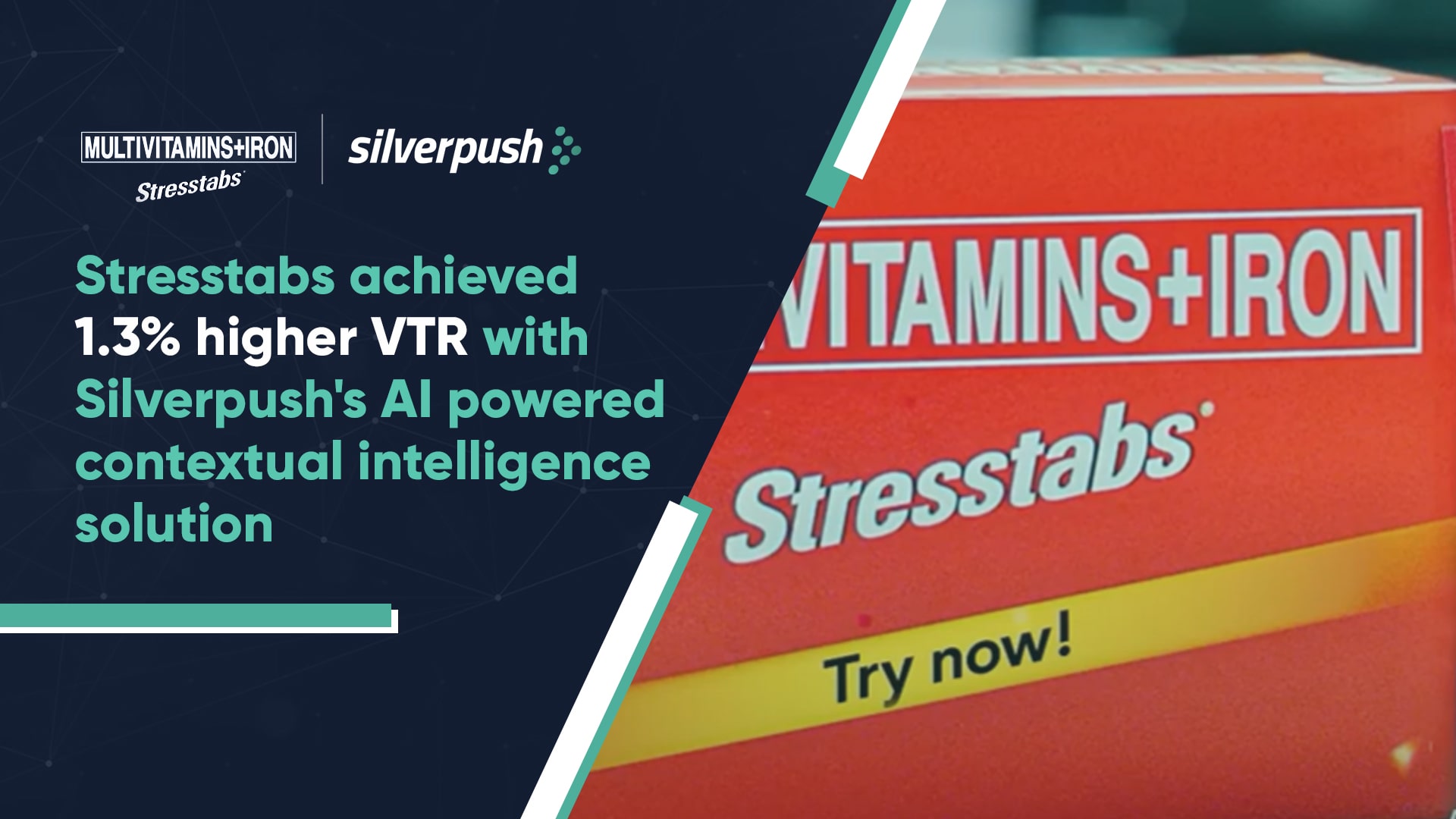Trick or Treat? Reach Your Audience with Spooktacular Ad Campaigns!
PUBLISH DATE: 10 October 2023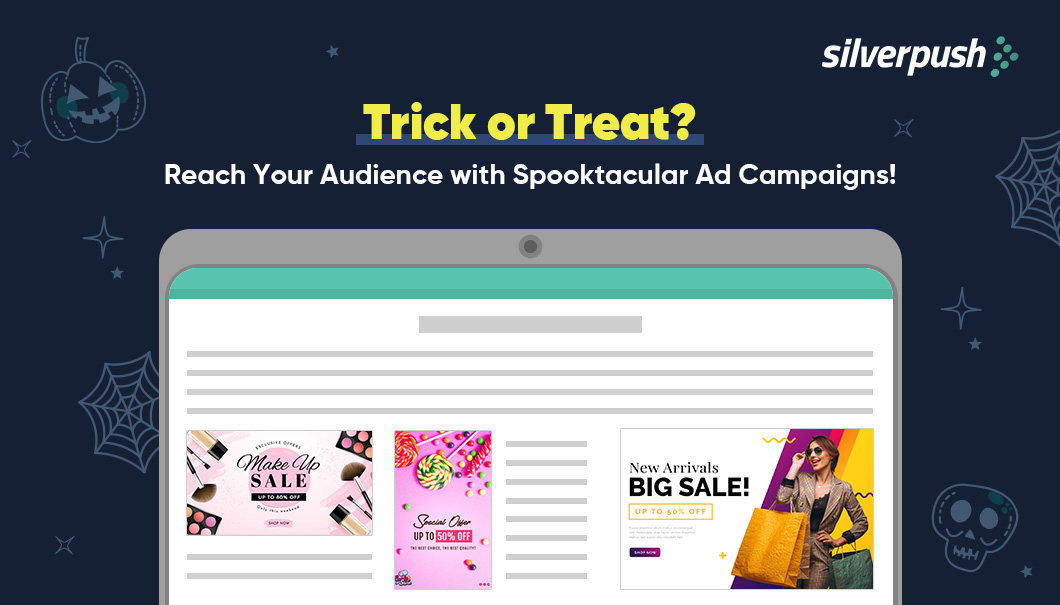
“A successful marketing campaign is like a well-carved pumpkin – it leaves a lasting impression.”
Every brand and advertiser aims to craft a compelling narrative that deeply connects with their audience, and leaves a lasting impression. Halloween season offers a unique opportunity to connect with your audience through spooktacular Halloween ad campaigns that capture the spirit of the holiday.
But before we delve into how to seize the opportunity let’s focus on….
Why Advertisers Should Ace Their Halloween Campaigns?
Halloween isn’t confined to any particular region anymore. It’s a global celebration, making it the perfect stage for brands to embrace cross-cultural marketing or launch multicultural campaigns. Did you know, in Japan, approximately 20-30 million people celebrate Halloween each year whereas, in the Philippines, 90% of people know and celebrate the spooky festival.
Moreover, Halloween spending is on a thrilling trajectory, set to hit a spine-tingling $12.2 billion this year, surpassing the 2022 figures by $1.6 billion.
Where the audience is spending the most?
The big bucks are flowing into candy (96%), decorations (77%), costumes (69%), and even greeting cards (35%). And where are folks flocking to get their Halloween fix?
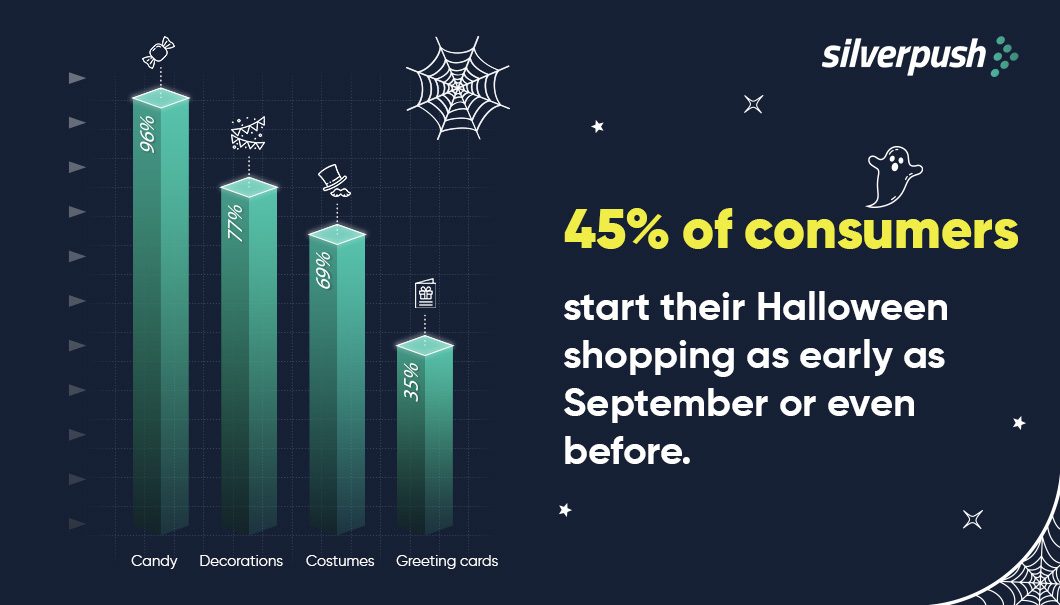 Candy (96%), Decorations (77%), Costumes (69%), and even Greeting cards (35%). 45% of consumers start their Halloween shopping as early as September or even before. Additionally, a significant 22% of consumers believe that retailers can begin showcasing and selling Halloween products.
Candy (96%), Decorations (77%), Costumes (69%), and even Greeting cards (35%). 45% of consumers start their Halloween shopping as early as September or even before. Additionally, a significant 22% of consumers believe that retailers can begin showcasing and selling Halloween products.
Halloween presents a lucrative chance for brands to engage with their audience extensively, as a substantial 45% of consumers start their Halloween shopping as early as September or even before. Additionally, a significant 22% of consumers believe that retailers can begin showcasing and selling Halloween products, both online and in physical stores, without any concerns about it being too early.
Well, the numbers speak volumes, but they don’t tell you how to reach your audience effectively. (But we do!)
How to Cast a Spell of Engagement This Halloween Season?
What humans see tends to linger in their memory, but the modern average user is constantly bombarded by ads throughout the day. In fact, they may encounter anywhere from 4,000 to 10,000 ads daily, yet only notice a fraction of them—less than a hundred, to be precise.
So, how can your message stand out in this advertising onslaught? The answer is surprisingly simple: harness the power of video ads and ensure they are contextually relevant to the moment.

Since we have gained the foundation understanding about the significance of video ads we must look into how to make these holiday season video ad campaigns effective.
1. Be Relevant
Approximately 79% of consumers are comfortable with ads that are relevant to the topics they are currently engaged with.
With the decline of third-party cookies, advertisers are shifting their focus to contextual targeting. This approach results in a 30% higher conversion rate compared to non-contextual ads.
Reaching the right audience at the right time not only fosters positive brand recognition but also boosts engagement.
2. Omnichannel Presence
Brands must follow the mantra of “Reach your audience where they are.” This means having an omnichannel presence to connect with audiences across various platforms where they leave their digital footprints.
An integrated brand presence across multiple marketing channels enhances brand awareness and facilitates easier audience connection.
Silverpush’s Mirrors offers a solution to reach the right audience on platforms like Open Web, Meta, and YouTube. It employs AI-driven context identification technology, ensuring precise audience targeting, even in a cookieless tracking environment.
The human-augmented technology offers contextual advertising across platforms while maintaining strict brand safety guidelines.
3. Dynamic Video Optimization
Today the attention span of the audience is similar to a toddler. But with dynamic interactive videos advertisers can engage the audience for a longer span of time.
Studies show that brands can increase consumer engagement up to 3X with 15-second interactive ads.
Crafters is a flagship product by Silverpush that harnesses real-time data and user insights to revolutionize ad campaigns.
Advertisers can deliver highly personalized and relevant ad experiences to their audience through precise targeting and endless customization opportunities.
Conclusion
Holiday season ads are best to captivate the audience but to achieve the goal advertisers must adopt the best option. With the demise of third-party cookies, contextual advertising has taken center stage. So to stand out front of the competition advertisers must opt for contextual targeting while adding the layer of interaction to make their ad campaign as spooktacular as their celebrations.
Finding Needle in a Haystack with Mirrors Generative AI
PUBLISH DATE: 27 September 2023
In today’s fast-paced digital landscape, understanding your audience is paramount to success. The ability to connect with your target audience is the key to achieving your goals. But how can you ensure that you’re reaching the right people in a world overflowing with information?
Understanding Audience Intent Consumption with AI
Artificial Intelligence (AI) has become a game-changer in the world of advertising especially when it comes to analysing vast amounts of information and extracting meaningful insights to help identify & understand the target audience better.
AI-powered tools can help advertisers to analyze consumer behaviour patterns, purchasing habits, social media interactions, and online content consumption to uncover valuable information about consumer preferences and sentiments. By leveraging this technology, brands can gain a deeper understanding of their target market, identify emerging trends, and refine their brand values accordingly.
Furthermore, AI algorithms can spot trends and connections in consumer data, which helps businesses match their brand values with what their audience wants. This analysis helps brands create messages, designs, and marketing plans that really connect with their target customers.
Crafting Compelling Brand Stories Using Generative AI
Mirrors Generative AI is a contextual planning tool designed by Silverpush to help advertisers reach their overlooked and untapped audience in the cookieless era. Its real power lies in its ability to seamlessly integrate AI as a co-pilot to human intelligence. The advanced technology builds a comprehensive context list, well aligned with the audience’s personas and their direct and alternate interests. This enables advertisers to reach untapped/overlooked yet relevant audiences, resulting in enhancing incremental reach.
How does Mirrors Generative AI Understand Audience Intentions and Content Consumption Patterns?
1. Identify Key Contexts Across the Internet
Every time a consumer goes online, they express their intent in countless ways. From the content they read, what they search for, the type of device they access it on, and the time of day.
The technology identifies key contexts across web pages, surveys, and a wide range of content on the open web, examining each word with precision. This enables Mirrors Generative AI to uncover content consumption patterns, decipher meaning, and extract valuable insights that surpass surface-level understanding.
Mirrors Generative AI suggested personas and content themes are delivered through machine learning and constantly verified using up-to-date panel data. They are robust, trustworthy, and completely free from human bias.
2. Predictive Audience Insights
Mirrors Generative AI doesn’t stop at understanding and personalizing content; it can also predict audience behaviour. By analyzing large datasets, AI models can identify patterns and trends that human analysts might miss. This allows advertisers to anticipate changes in user behaviour and adjust their strategies accordingly.
For example, if the AI predicts that a certain segment of the audience is likely to show increased interest in fitness products during the summer months, advertisers can proactively target that segment with relevant campaigns.
3. Mapping Audience Personas to Contextual Intelligence
It identifies patterns and correlations between audience personas and contextual factors, to uncover commonalities, preferences, and behaviours within specific contexts. This mapping exercise determines personas are likely to respond favourably to specific contextual elements. Achieving high engagement relies on targeting diverse audience personas with their specific interests in the right moment and context. However, advertisers still rely on manual context-building methods, which, despite their partial success, have several limitations.
Conclusion
Finding new target audiences can feel a lot like searching for a needle in a haystack. But, through Mirrors Generative AI, advertisers can identify net new audiences across hundreds of millions of potential consumers. Generative AI is a look ahead of the fast-paced evolution of technology, helping audience discovery using different models to reinvent the way work is done.
Festive Season: Here’s How to Stand Out with Innovative Video Ads
PUBLISH DATE: 25 September 2023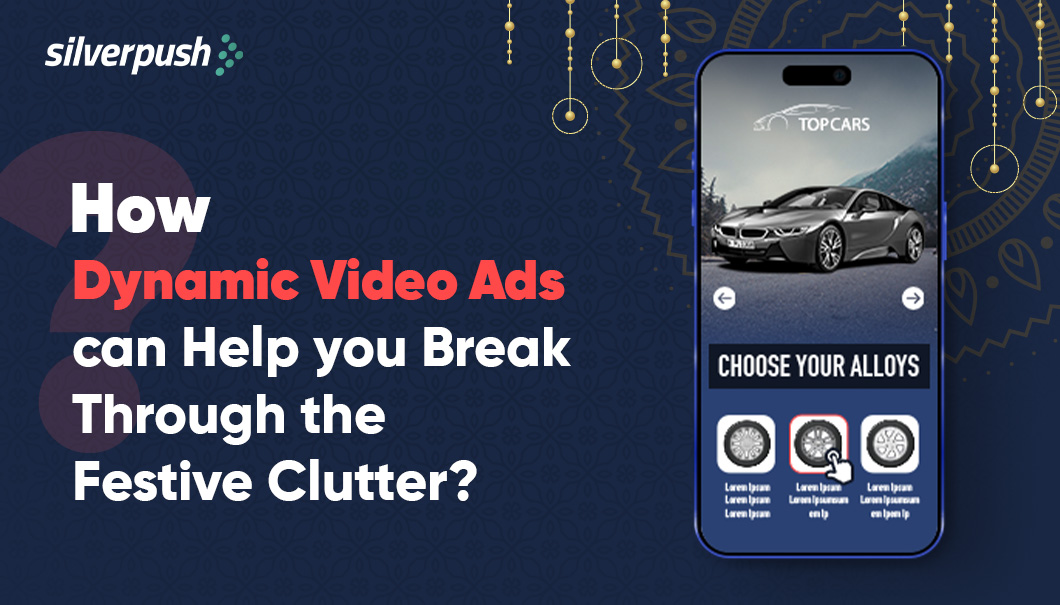
The festive season in India is a time of joy, celebration, and significant opportunities for brands to connect and engage with their audiences. As more and more people spend their time online, it has become crucial for businesses to leverage digital platforms effectively. One powerful tool that can help brands ace their score this festive season is interactive ads.
As we step into the festive season in India, the advertising industry is gearing up for what promises to be a blockbuster year. With Dussehra, Diwali, and the ICC Cricket World Cup 2023 on the horizon, brands are ready to capitalize on this opportunity to connect with their target audience.
By staying informed about market trends, effectively targeting specific industries, and developing engaging advertising campaigns, brands can tap into the potential of festive marketing to boost their sales and leave a lasting impression. Dynamic video advertising is a valuable tool that enables brands to distinguish themselves in a crowded marketplace and outshine their competitors.
2024 Festive Season: Brands Go All Out for Ad Revenue!
As per a report by the Economic Times, the media industry, spanning print & digital platforms, is anticipating advertising revenue to grow at double digits to more than 30,000 crore during this festive season in 2023 due to a longer period of festivals.
Based on leading advertising agencies’ reports, the projected advertising revenue for the 2023 festive season in India is estimated to be a staggering $5.5 billion. This is a significant increase from the previous year, driven by the convergence of major festivals and highly anticipated sporting events.
Read More: Navigating Path in Programmatic with Contextual advertising
The Growing Trend of Online Shopping in India
Deloitte India predicts that the online retail market in the country could surge to a staggering USD 325 billion by 2030, a significant leap from the USD 70 billion recorded in 2022. This remarkable growth is primarily attributed to the rapid expansion of e-commerce in tier-2 and tier-3 cities.
In 2023, online shopping in India is reaching new heights, with an increasing number of consumers turning to the internet for research & purchase products. According to a study, 81% of consumers go online to find information about the product/service before making a buying decision.
In FY 2021-2022, as per a report by Mint, the number of annual online shoppers in India was about 185 million across India. This number is likely to increase to 425 million by 2027.
Leveraging Dynamic Online Video Ads for Personalized Festive Advertising
Let’s explore strategies, insights, and trends behind successful festival ad campaigns. Here’s how your brand can leverage granular targeting, innovative strategies, and interactive ad experiences to stand out during festive seasons, captivate your audience and elevate your brand recall.
1. Captivate Users Amidst Festival Frenzy!
Festivals bring people together, both personally & digitally, leading to a significant increase in online activity. To cut through the digital clutter and capture user attention, brands should craft innovative and interactive campaigns.
By leveraging the power of dynamic & interactive video advertising for shoppable ads new retail opportunities by allowing brands to connect with people in a new way and stimulate the user to make a purchase.
2. Understand the Cultural Significance
India’s festivals are steeped in rich culture and tradition. To create compelling campaigns, brands should begin by gaining a profound understanding of the cultural significance of the celebrations they aim to engage with. This comprehension serves as the foundation for tailoring messages that deeply connect with the emotions and values inherent in these festive occasions.
3. Engage your Audiences with Create Festive-Themed Content
Brands have the opportunity to customize their short video and open web ad content to harmonize with the festive ambience. By incorporating festive colours, symbols, and music, they can craft an immersive experience for their audience. This approach allows them to showcase how their product or service can elevate and become an integral part of the festival celebrations, enhancing the overall festive experience.
4. Evoke Nostalgia and Emotions Through Compelling Storytelling
Crafting messages that evoke nostalgic childhood days or cherished festive memories not only enriches content but also bolsters the authenticity of the brand. Furthermore, relatable content has the power to kindle nostalgia, prompting individuals to feel compelled to share it with their loved ones. This not only boosts brand visibility but can also foster the creation of a dedicated and loyal customer base.
5. Run targeted Innovative Ads & Optimize for Mobile
Given the rise of mobile internet usage in India, it’s imperative to prioritize the optimization of ad campaigns for mobile devices. To maximize the impact of festive holiday campaigns, it’s essential to segment your audience based on demographics, preferences, and behaviour. This segmentation ensures that your ads are strategically delivered to the right audience, at the right time, enhancing their effectiveness.
Final Take
This festive season, it’s all about maximizing your brand’s awareness and leading to more clicks. Dynamic video optimization tool is your ticket to achieving just that. With personalized video content, data-driven insights, interactive elements, and a seamless user journey, you’ll be well-equipped to make a lasting impression on your audience. So, don’t miss out on the online video ads advantage and make 2024 unforgettable with standout festival advertising.
TET 2024: Market Insights and Consumer Behavior
PUBLISH DATE: 22 September 2023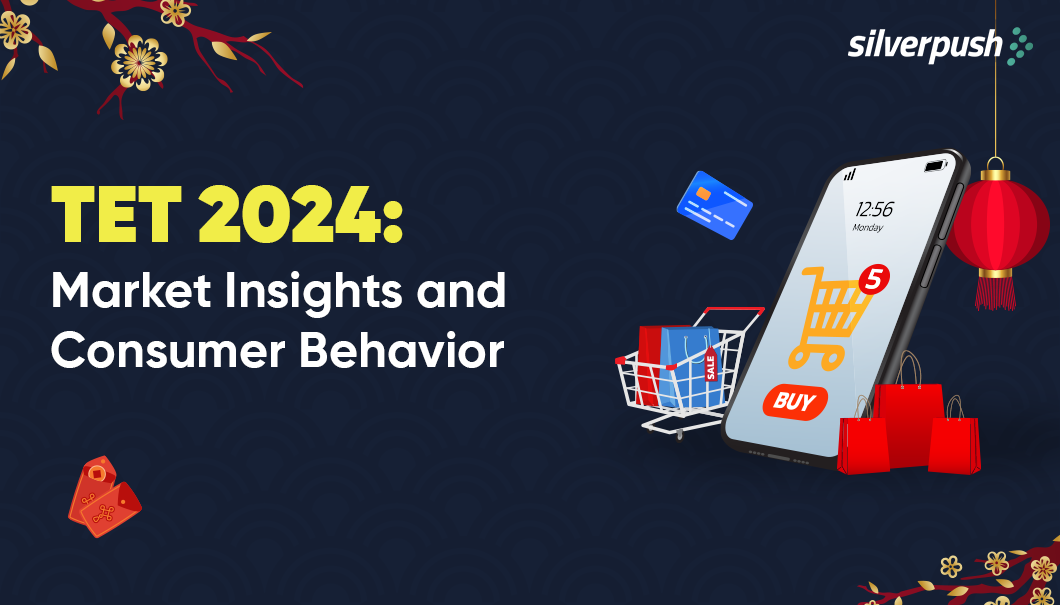
Tet 2024, the Lunar New Year in Vietnam, is not just a celebration – it’s a vibrant explosion of culture and tradition that paints the country in hues of hope, renewal, and good fortune.
Imagine the excitement of spring’s arrival, the anticipation of a fresh start on the lunar calendar, and the universal embrace of good luck. Tet is all of this and more.
You must be wondering, why all this talk about Tet.
Well, understanding Tet, consumer trends in Vietnam, and diving into the deep well of its cultural customs and rituals is the golden key for advertisers. It’s the secret sauce to connect with Vietnamese consumers during this grand season of celebration.
Why is TET 2024 a Big Opportunity for Advertisers?
The Tet celebrations in Vietnam are a big deal, not just culturally but also for businesses. Before Tet, people spent twice as much as usual. They do this to give family and business associates gifts and enjoy time with loved ones.
For many companies, whether they do well or not during the Tet Campaign 2024 can make or break their entire year. According to a report by Cimigo, brands that make spirits see up to 60% of their yearly sales in the six weeks leading up to Tet.
Beer sales go up by 30%, and things like soft drinks, biscuits, and candy also sell a lot more. People also use this time to refresh their homes and themselves, so sales in personal care, fashion, home appliances, and building materials go up.
Most people shop for Tet at supermarkets and wet markets, but personal care products sell well online.
In Tet 2024, Vietnamese people are feeling positive and plan to spend more on travel and shopping, especially for things like mobile phones, motorbikes, and appliances.
Consumer Trends During TET 2024
- The typical Vietnamese shopper plans to spend approximately $100 during the Tet period.
- Fast-moving consumer goods (FMCG) will make up the majority, accounting for 60% of online sales.
- Among product categories, beverages are expected to be the top choice, with a growth rate of 20%.
- Half of the shoppers are looking for personalized and tailored shopping experiences.
- A significant 80% of shoppers intend to utilize social media platforms for product research.
- Around 20% of shoppers are interested in live-streaming shopping to engage in real-time interactions while making their purchases.
How Should Brands Reach the Vietnamese Audiences During TET 2024?
Mirrors and Parallels, the two AI-powered brand-suitable solutions of Silverpush can help brands and agencies reach their Vietnamese audiences contextually this Vietnamese New Year. Let’s see how:
1. Real-Time Ad Sync
Leverage the festive season of the Vietnamese New Year to capitalize on cross-screen consumer behavior through real-time syncing of TV ads with digital ads on social media platforms with geo and demographic targeting. Our technology identifies real-time Tet-related triggers on TV to synchronize your brand ads.
2. Competition Sync
Stay ahead of the competition by targeting your competitor’s screen time.
3. Self/Competitor Sync
Enhance ad recall by syncing your TV and digital ads. Outsmart competitors by triggering your digital ads alongside competitors’ TV ads.
4. Geo-Fencing
Activate mobile ads when consumers are in proximity to stores or marketplaces.
5. Mirrors
Mirrors serve contextual ads by identifying key contexts like celebrity name, brand name, objects, places, actions, and on-screen text (in 500+ Chinese New Year contexts) to capture your audience’s attention across multiple platforms and increase brand awareness during this opportune time.
6. YouTube
Mirrors can identify key moments on YouTube, such as shopping, traditional recipes, TET preparation, and home decor, to strategically place your ads when users are most engaged and in a completely brand-safe environment.
7. Meta
On Meta, Mirrors can identify Tet-related content across popular pages and contexts, ensuring your ads reach audiences when they’re most likely to engage.
8. Programmatic
Mirrors can craft tailored contextual segments for the Tet festival, allowing advertisers to target audiences based on Tet-related search intent.
To boost Tet campaign viewability, advertisers can utilize Crafters’ interactive Tet elements from the curated gallery or create custom interactive ads.
Conclusion
In a nutshell, Tet Vietnam 2024 is a vibrant season of celebration and spending in Vietnam, making it a prime opportunity for brands to engage with consumers and boost their sales. By embracing innovative advertising technologies like Mirrors and Parallels and understanding the cultural significance of Tet, advertisers can make the most of this festive occasion and ensure a prosperous start to the Lunar New Year.
Brand Safety’s Secret Role in Brand Suitability
PUBLISH DATE: 21 September 2023
With the rise of online advertising and social media, brands can reach consumers in unimaginable ways. However, with great opportunity comes great responsibility, especially when we are talking about brand suitability.
In this digital age where the internet is filled with tons of information, ensuring your brand is seen in a safe and appropriate context is paramount. Keep reading to understand the basics of brand safety and suitability and explore why brand suitability begins with brand safety and why it should be a top priority for every business.
What is Brand Safety?
Brand Safety refers to the practice of safeguarding a brand’s image by preventing it from appearing alongside content that could be damaging or inappropriate. This includes avoiding associations with topics such as hate speech, terrorism, illegal activities, piracy, obscenity, and content related to death or injury. For instance, a brand wouldn’t want its ads to be displayed next to breaking news about a conflict or crisis. Traditionally, brand safety has employed methods like keyword banning and URL blocklisting to avoid unwanted connections between the brand and harmful content.
What is Brand Suitability?
Brand Suitability, on the other hand, takes brand safety a step further. It goes beyond simply avoiding harmful content and focuses on understanding the deeper meaning and context of the content surrounding the brand’s advertisements.
For example, a publisher in the banking industry whose ad inventory is ideal for banks. If reports of financial wrongdoing emerge in the news, banks may want to avoid placing ads within those specific articles. However, completely blacklisting the entire website may harm the advertiser’s efforts. This is where brand suitability comes into play, allowing advertisers to filter out specific articles or content that may be considered “risky” while still benefiting from advertising on the rest of the site.
In short, brand safety is about avoiding content that is obviously harmful, while brand suitability involves a more nuanced approach, taking into account the context and meaning of content to ensure a brand’s advertising aligns with its values and objectives. Both practices are essential for maintaining a positive brand image in the ever-evolving digital advertising landscape.
How Brand Suitability Begins With Brand Safety?
Historically, brand safety has centred on the marketer’s need to prevent ads from appearing next to content deemed inappropriate for the target audience. These tactics now seem outdated and inflexible, lacking the level of control needed to build and maintain successful online businesses.
Currently, the major challenge for brand safety is the consideration of context and audience, both of which are essential for determining brand suitability which require more nuance.
Brand suitability is critical for the success of any advertising campaign since it focuses on the context of advertising and its influence on the brand. Furthermore, brand appropriateness may aid in determining which regions appeal to the intended demographic.
As a result, it might be viewed as the next evolutionary step in brand safety. While brand safety is mainly concerned with preventing or deleting the most harmful and destructive information, brand appropriateness is the act of minimising the possibility of a brand appearing in an improper setting so that companies’ reputations may be maintained. However, by tweaking the message, some firms are changing and employing historically dangerous pages for advertising.
Brand Suitability and Safety in a World of Constant Change
As consumers become more sophisticated, marketers and brands must adapt and adopt brand safety and suitability best practices.
In line with the media targeting strategy, brand safety should be flexible and evolve over time to assess emerging events and news cycles independently and determine which content is acceptable or inappropriate for a brand so that ads appear only on websites and apps that will benefit.
As a result, brand safety technologies that enable you to regulate and include or omit ad placements are critical for keeping a positive and suitable brand image.
Unfortunately, certain brand safety products are designed to be one-size-fits-all. It is tough to identify whether the ad is acceptable since not enough attention is paid to a brand’s distinctiveness or the context of words or visuals that appear in an ad.
Conclusion
By prioritizing brand safety and suitability, brands can protect their reputation, reach the right audience, and maximize the impact of their advertising efforts. In today’s competitive digital landscape, ensuring brand suitability is not just a choice; it’s a necessity for long-term success.
A New Era of Online Video Ads: Dynamic Video Optimization
PUBLISH DATE: 19 September 2023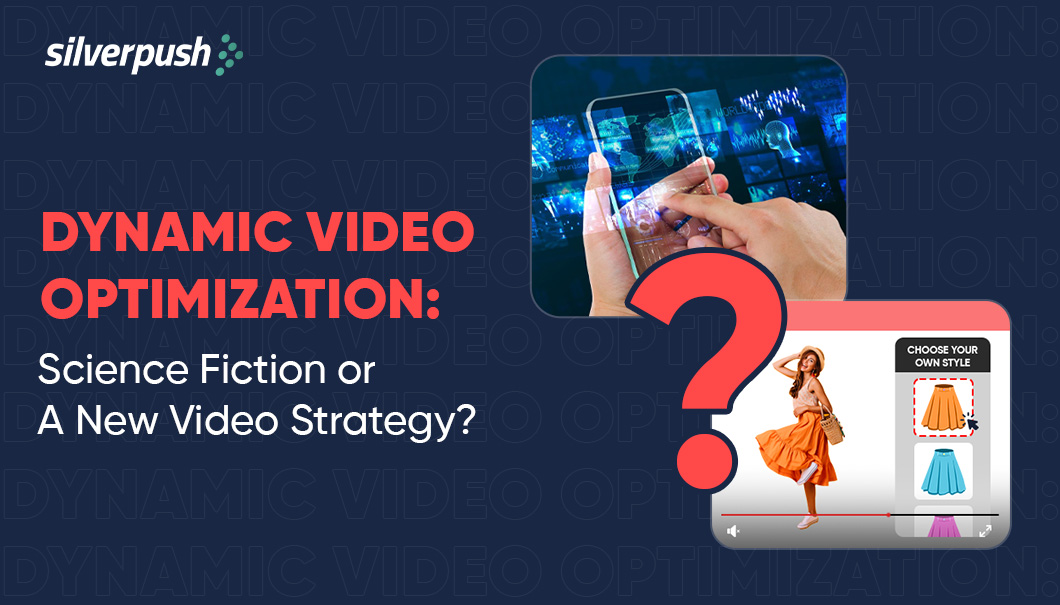
Dynamic Video Optimization may seem like a concept straight out of a sci-fi movie, but it’s very much a futuristic reality. This cutting-edge technology empowers brands to seamlessly integrate text, audio, or images into their videos, creating an endless array of variations from a single video source. This innovative approach enables brands to tailor their videos to reach specific audiences, paving the way for precision-focused video marketing strategies in their media plans.
Why is this particularly crucial, especially in the current landscape? The reason lies in the explosive surge of video viewership, especially on mobile devices, on a global scale. As dynamic video optimization continues to expand rapidly, brands are challenged to discover fresh and inventive methods to distinguish themselves from their intended viewers.
Why Interactive Video Ads Are an Asset?
The average daily time people spend consuming online videos has surged dramatically, increasing by more than fourfold since the global pandemic. This upward trajectory is further propelled by the widespread adoption of mobile devices.
Interactive video has quickly become a widely used marketing tool as brands are turning every stone for consumers’ attention. According to a study by Spiel Creative, almost 90% of marketers after incorporating interactive video noted a growth in their online sales, and over 85% said that they would create more interactive videos in the future.
Enhance Your Brand’s Presence with Compelling Video Content
Brands increasingly embrace video content enriched with customized messaging that is finely tuned for specific audiences. When compared to traditional display advertising, video marketing emerges as a significantly more dynamic and interactive medium, consistently demonstrating its ability to foster heightened engagement and subtly captivate customers.
Challenge with Videos on The Open Internet
So, why are brands hesitant to leverage this technology more for their ad campaigns? Why aren’t videos dynamic? The only issue that limits the potential of a video marketing campaign is the amount of customization that can be done. Video ads today are generic and communicate the same story to all users – unlike display ads which are increasingly becoming more dynamic with widely available solutions.
Adding to the above, video production also presents its challenges which include: lengthy planning periods, high production costs, and long lead-up times. Add customization to it, and it becomes even more complex.
A Next-Gen AI Solution: Crafters
Crafters is an innovative AI tool to create dynamic video advertising that allows brands to dynamically embed interactive elements within their videos to generate unlimited video variations – cutting down on efforts, costs, time, and planning. Text is integrated using the brand’s native font type.
A brand develops a single video to showcase its latest offer. With Crafters, a different message can be shown to the user depending on multiple factors. A popular streaming platform used Crafters to increase brand awareness for their new show, in which viewers could pick a character based on the video for which that specific character is played.
Here’s a photo from the original video:

Here is an image of videos generated by Crafters that speak to a viewer’s preferences:
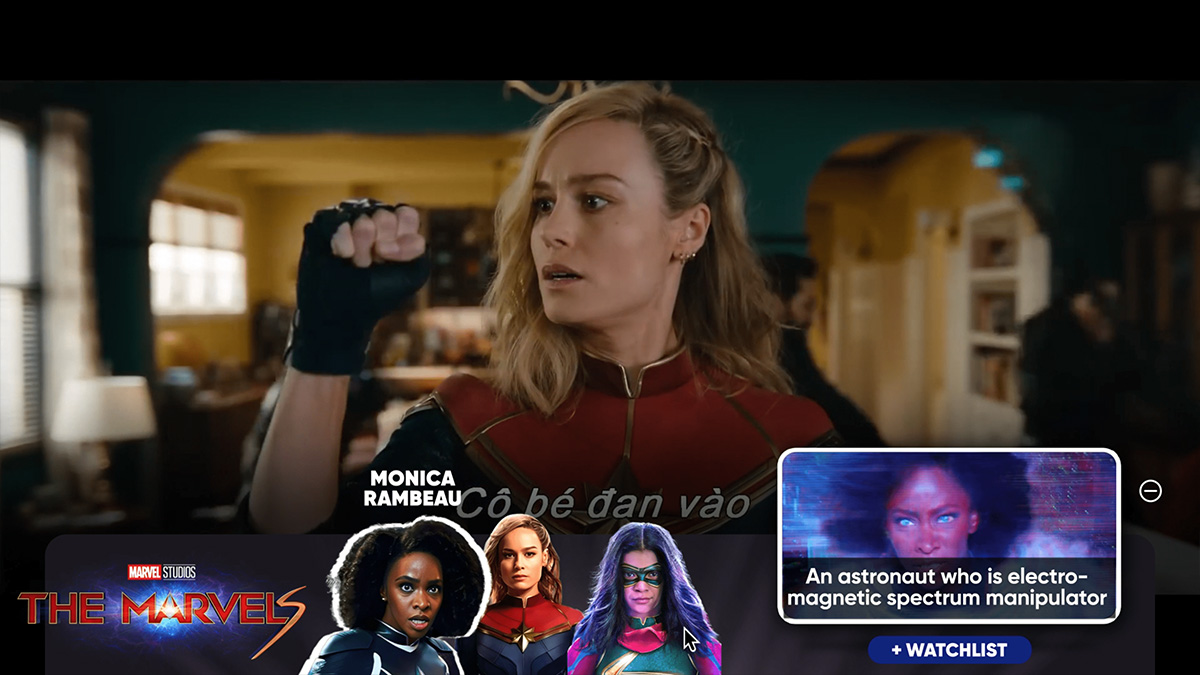
Our innovative AI technology allowed the brand to customize a variety of messages around the themes of characters. The campaign allowed the brand to transform its simple video ad for a new TV series into a powerful and targeted message delivered to the intended audience.
With more and more users having access to the Internet and turning to Openweb for their search, Crafters is a clever way to add a personal touch and develop multiples of one video. The future is definitely here.
The Role of Context in Advertising
PUBLISH DATE: 18 September 2023
In the ever-evolving world of advertising, it’s not just what you say but where you say it that matters.
Consumer behavior is rapidly evolving due to which advertisers have been forced to take a deeper look at ways of their advertising. The ban on third-party cookies by the big browsers gave rise to a revolution in the advertising approach where advertisers have been adopting the age-old method which is Contextual Advertising.
In this blog post, let’s dive deep into the crucial role that context plays in advertising.
Understanding Context in Advertising
In the world of advertising, context refers to the environment or circumstances in which an ad is presented to the audience. This can encompass a wide range of factors, including the time, place, culture, and the specific audience the brand is targeting. Understanding context in advertising is vital for advertisers because it shapes the way people perceive and respond to their messages.
According to Nielsen research, consumers are more receptive to contextual advertisements when they are presented in relevant contexts. For instance, if an individual visits a sports website to check football scores, they may encounter advertisements related to football jerseys or local sporting events.
The advantage of contextual advertising lies in its focus on the content viewers are engaging with, rather than targeting specific individuals. This approach ensures that audiences receive advertising that aligns with the content they are consuming, reflecting their interests in the process. Furthermore, contextual advertising does not compromise user data, offering a practical and privacy-friendly solution in a world without cookies.
Contextually relevant ads help advertisers reach a wider segment of the audience as they target anyone who is engaged with the relevant content. Contextual ads leverage the already generated interest of the target audience which may trigger the user to take the desired action.
Since we have gained a foundational understanding of the concept, let’s dive into the benefits advertisers can gain with contextual ads.
Benefit 1: Context Ads and Cultural Targeting
Multicultural targeting has also gained significant popularity in recent times and one of the most significant aspects of multicultural targeting is cultural context. Different cultures have unique values, traditions, and beliefs that can significantly impact how advertising messages are received.
For instance, what might be humorous in one culture could be offensive in another. This further keeps advertisers on high alert to ensure their ads resonate positively with their target audiences.
Context in advertising can help advertisers target specific communities by tapping into the personas and passion points that resonate with them.
Benefit 2: Context and Personalization
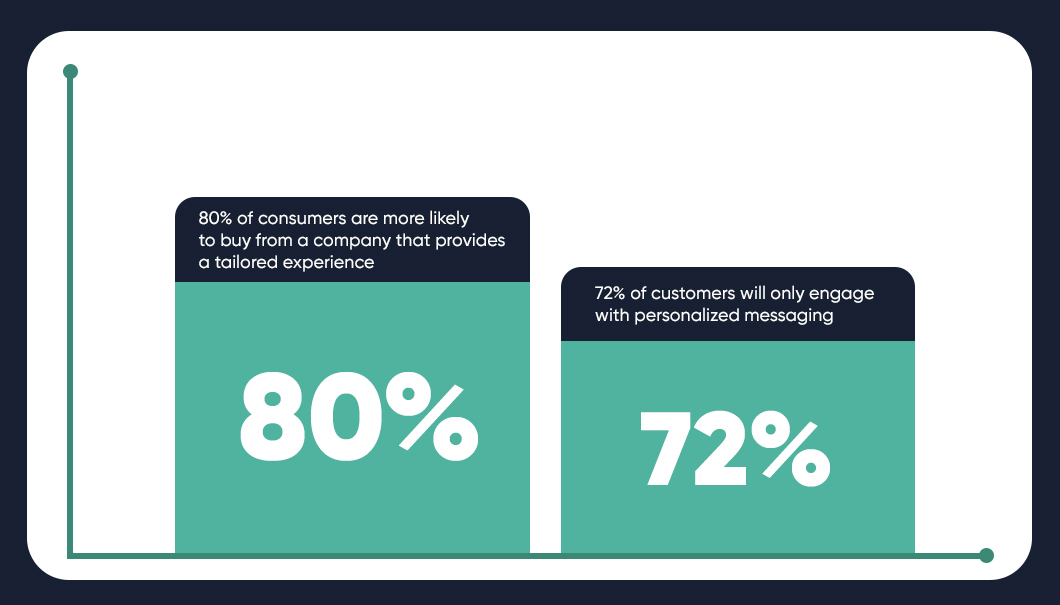
When ads are relevant to the content consumed by the consumer it adds personalization for the consumer. 80% of consumers are more likely to buy from a company that provides a tailored experience and 72% of customers will only engage with personalized messaging. Contextually relevant advertising provides user with a personalized experience which increases the chances of their engagement.
The Contextual Solution: Mirrors
Silverpush a leading ad-tech organization, offers Mirrors technology.
The next-gen AI-powered technology offers a comprehensive web page with key context capabilities that encompass text, images, and videos. Powered by Natural Language Processing (NLP), it can identify keywords and categorize the content. Additionally, this AI-driven technology utilizes video to recognize elements within images.
Also Read: Silverpush Paves the Way in Revolutionizing Contextual Advertising with Generative AI Technology
Moreover, Mirrors employs semantic analysis to extract meaningful information from webpage content. This includes discerning emotions and identifying instances of sarcasm. The information extracted through this process plays a pivotal role in the delivery of tailored advertisements that are relevant to the content.
Conclusion
In the fast-paced world of advertising, context is the glue that holds it all together. Context-based advertising has emerged as a sustainable choice for advertisers in these evolving times where they have to deliver personalized ads without invading the privacy of the user.
Unlocking the Power of Hispanic Heritage Month: A Guide for Advertisers
PUBLISH DATE: 13 September 2023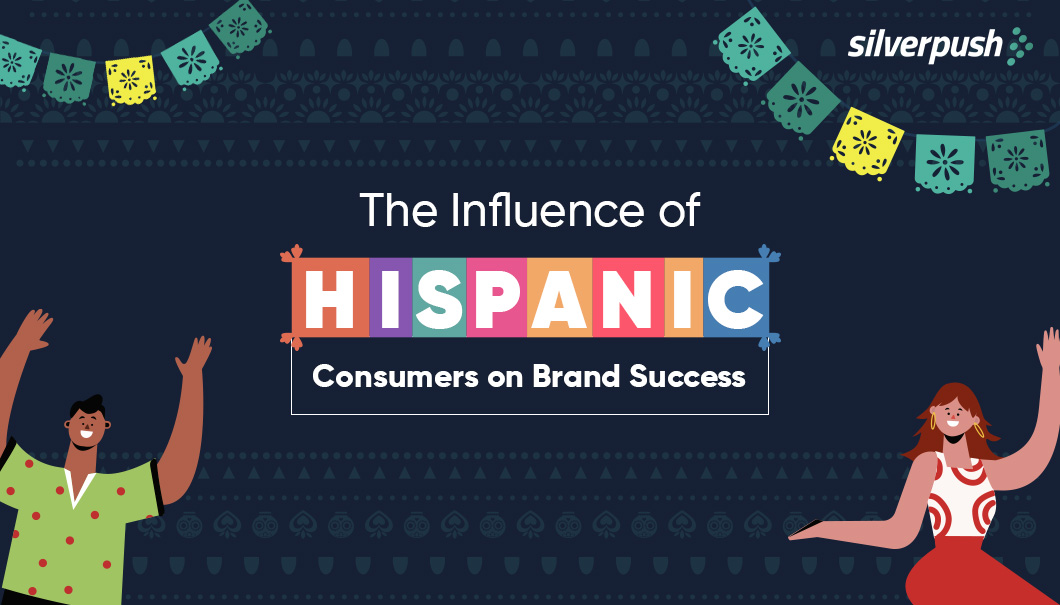
With $2.5 trillion worth of buying power, the Hispanic market is no longer a niche market, but a ‘new majority’.
The Hispanic population currently stands at 62.65 million which is nearly 20% of the U.S. population. Projections suggest it will reach 111.22 million by 2060, playing a major role in U.S. population growth.
The Hispanic audience in the United States is a diverse and affluent group that is quickly becoming one of the most influential markets. However, many advertisers have yet to tap into this market.
By understanding the diversity of the Hispanic community and what matters most to them, advertisers can connect and engage with this valuable audience. This is an essential strategy for brand growth.
Hispanic Demographics: A Growing Influence
The Hispanic and Latino demographics saw the fastest growth, with 2.4 million households earning over $150k annually, a 13% increase. They also hold a significant presence in the income bracket just below, with 3.6 million households earning between $90k and under $150k, comprising 14% of that category.
As a group, U.S. Hispanics’ GDP is expanding faster than those of Germany, the U.K., France, and Japan.
Hispanic and Latino Americans hail from a wide array of backgrounds, encompassing countries in Latin America, the Caribbean, and Spain. Within this community, one can find a mosaic of cultures, languages, traditions, and religions. This multifaceted diversity is joyously celebrated throughout the month with a kaleidoscope of festivals, music, dance, art, and cuisine.
However, when it comes to brands and advertisers, there seems to be a common oversight in their approach of targeting them in spite of so much potential. This overlook could be due to the challenges faced by the advertisers.
Here are some cultural insights that are effective in increasing enjoyment and engagement with your ads among U.S. Hispanics.
1. Celebrities and influencers: Charismatic celebrities and influencers can help you introduce your brand or products to Hispanic consumers. When choosing an endorser, make sure they are a good fit for your brand and that their values align with yours.
2. Tap into Music and cultural affinity: Use music and other cultural touchpoints to connect with Hispanic consumers on an emotional level. This could involve using Spanish-language music, featuring Hispanic artists, or incorporating cultural symbols into your marketing materials.
3. Create escapist marketing campaigns: Hispanic consumers are drawn to marketing campaigns that offer a sense of hope, adventure, or nostalgia. This could involve creating a fantasy world, telling a heartwarming story, or tapping into a shared cultural experience.
4. Family-focused: Family is a central value in Hispanic heritage. When marketing to Hispanic consumers, make sure to highlight the importance of family in your messaging. This could involve showing families spending time together, celebrating holidays, or overcoming challenges.
5. Community: Hispanic consumers are more likely to support brands that are involved in their communities. Get involved in local events, donate to Hispanic charities or sponsor Hispanic-focused organizations.
Challenges and Pitfalls in Multicultural Advertising
Multicultural advertising also presents unique challenges. Here are some common pitfalls and potential obstacles that businesses may encounter, such as –
Overgeneralization – The Hispanic community is a diverse community in itself. While targeting the community advertisers often opt for a “one-size-fits-all” approach and do not acknowledge that individuals within the same Hispanic ethnic group can vary significantly. This results in an overabundance of cultural touchstones from one country and alienating another country in the process. Or, more drastically, targeting Latinos and calling them Hispanic and vice-versa.
Language barriers pose a significant challenge when it comes to advertising to the Hispanic community. This is because the community comprises various Spanish dialects, bilingual individuals, nuanced cultural differences, varying levels of acculturation, and flexible language usage. Mere translations may not effectively convey the intended message and can even lead to offensive content.
Understanding the cultural norms, values, and social dynamics of the target audience is essential for creating advertisements that resonate and hold meaning for them.
Additionally, multicultural advertising should prioritize accurate and inclusive representation. This means showcasing a variety of voices, perspectives, and experiences in advertisements.
So, how can advertisers overcome these challenges?
Tailored Solutions to Reach Hispanic Heritage Consumers with Hyper-Contextual Targeting
Even well-crafted creative campaigns targeting the U.S. Hispanic heritage community may falter if they are not strategically placed where the audience can easily access them.
In today’s advertising world, where businesses rely on first-party and contextual data to reach their target audiences, it is important to partner with organizations that have valuable insights into the Hispanic community. These partners should have data on the community’s various segments, individual consumers, and interest trends. They should also have the technology to activate this data and deliver relevant marketing messages to Hispanic consumers.
Silverpush presents cutting-edge AI technology, Mirrors, which can play a pivotal role in precisely targeting the multicultural audience. The next-gen AI technology is the first video visual and audio key contexts identifying technology that uses a combination of contextual signals to reach your most relevant consumers at the right moment/context.
The advanced AI technology identifies personas using demos, cultural signals, core values, and content preferences. We analyze 20+ languages and entertainment choices (e.g. Telenovelas, movies) in Spanish & English. Furthermore, their passion points are identified by analyzing the activities and areas of life of people having deep interest & priority when spending their time, money, and attention. E.g., family, emotions, sports, music, food, and important dates.
Also Read: Silverpush Paves the Way in Revolutionizing Contextual Advertising with Generative AI Technology
What Does Hyper Contextual Targeting For Multicultural Advertising Do for Your Brand?
Relevant advertising is what users want. They want to see ads that are relevant to their interests and needs at the moment. Inclusive advertising, when done right, can build trust, and loyalty, and drive purchase intent.
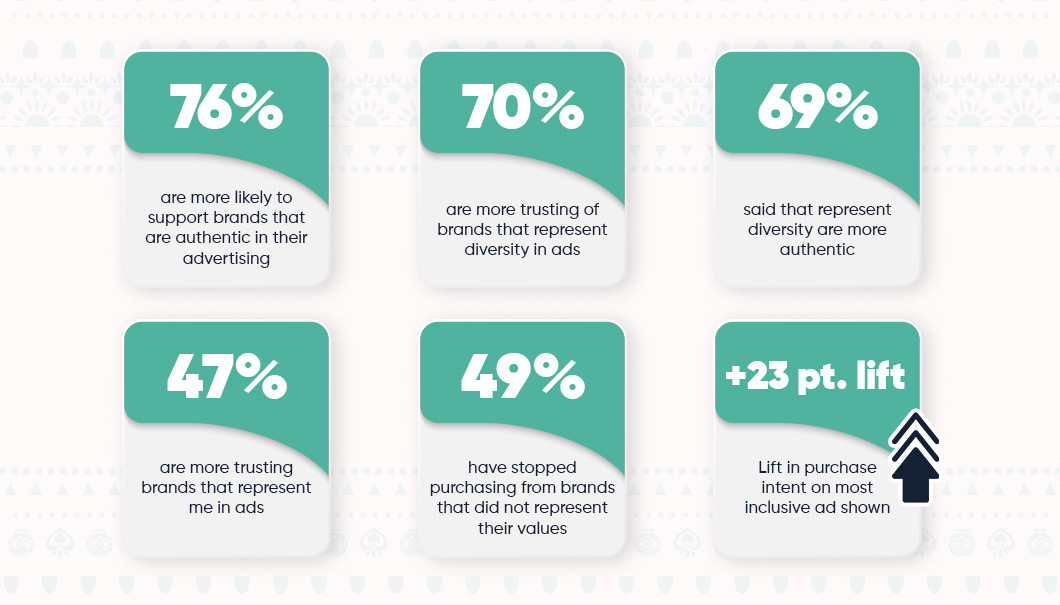
Conclusion
It’s clear that U.S. Hispanic heritage is a massive force, driving the economy and influencing the future. As the fastest-growing adtech company, Silverpush has the products and capabilities to help brands engage with America’s growth engine in culture, language, and across touchpoints. From unparalleled ratings momentum to the recent launch of the biggest Spanish-language streaming brand in the world.
Navigating Path with Contextual Advertising in a Programmatic Advertising Landscape
PUBLISH DATE: 29 August 2023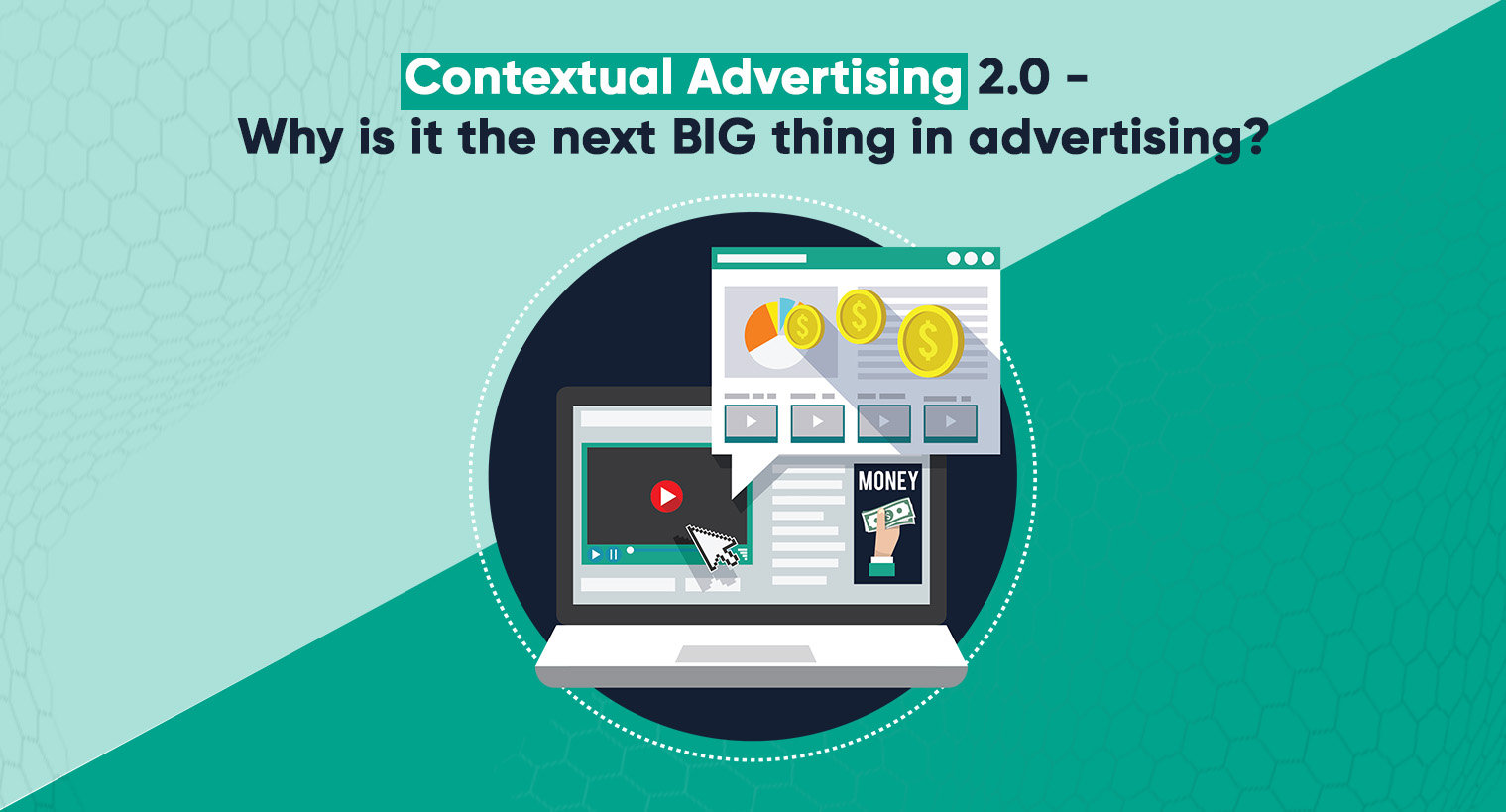
In the rapidly changing landscape, a seismic shift is underway. We are living in times when automation has taken center stage in all sectors, especially advertising.
Gone are the days of laborious manual toil for advertisers and publishers alike. Enter programmatic advertising, the game-changer that harnesses data and technology to plan the perfect sync of ads, reaching their intended audience at the precise moment.
The prediction of global programmatic ad spending is to reach 725 billion by 2026. The United States remains the leading programmatic advertising market worldwide. However, advertisers often encounter, two major challenges with programmatic ads:
- Lack of transparency
- Ineffective targeting
The programmatic advertising environment is intricate and opaque, making it challenging for advertisers to comprehend how the advertisements are deployed. As a result, advertisers waste money on ads and overpay. Programmatic advertising falls short of engaging the target audience since it heavily relies on data.
Also Read: What is Programmatic Advertising?
Navigating Path for Advertisers to Overcome Obstacles
Along with these challenges, there is another elephant in the room, the demise of third-party cookies.
With the third-party cookies phase-out, tracking user data will be difficult as they will not have a unique identifier that can be used to track users across multiple websites.
In this evolving landscape, advertisers find themselves at a crossroads.
- They are in desperate need of a solution that offers them a way to overcome the programmatic ad challenges.
- A solution that targets ads without interfering with the user’s privacy.
As a solution, contextual advertising is a ray of hope.
Contextual Advertising as a Solution: How?
In the dynamic realm of advertising, contextual advertising isn’t a newcomer. This methodology which aligns ads with the surrounding content, lost its spotlight as advertisers pivoted towards behavioral targeting, a strategy yielding superior outcomes by delivering personalized ads.
Yet, the relentless pursuit of personalization led to an overindulgence, raising concerns among users about data misuse and their digital safety.
The privacy concerns of users led to the introduction of strict guidelines by GDPR and CCPA along with major browsers banning the use of third-party cookies.
These changes have made advertisers retrace their steps to an older path of advertising– Contextual Advertising.
Contextual display advertising focuses on aligning the ad with the content of the web page rather than emphasizing the user’s data.
The AI-powered system identifies key contexts of the web page’s content and serves the most relevant advertisement based on contextual cues.
For example, a user engrossed in an article about car maintenance encounters an ad spotlighting the latest automobile release by a prominent brand. Here, the connection is made not through personal data but through content relevance.

Contextual targeting 2.0: Why is it better this time around?
As the world moves forward, contextual advertising is pacing up with it! The recent advancements in algorithms have helped advertisers to perform hyper-contextual targeting.
Natural language processing (NLP) is used to analyze the text content of web pages in order to help advertisers understand the context of the content.
Machine learning is used to develop algorithms that can predict the likelihood of a user clicking on an ad. This can enhance the ROIs and ensure advertisers that they are only paying for ads that are likely to be clicked on.
Hyper-contextual targeting is still in its early stages, but it has the potential to revolutionize the way that advertising is targeted. As AI and ML continue to develop, hyper-contextual targeting is likely to become even more accurate and effective, leading to better results for advertisers and publishers alike.
Get Started with Contextual Advertising Today!
AdTech organizations are taking full leverage of this evolving time! Silverpush, a leading ad tech organization, has introduced Mirrors, an AI solution for programmatic contextual advertising.
Mirrors comprehensively identify key contexts across webpages, including text, images, and videos. Utilizing Natural Language Processing (NLP), it identifies keywords and categorizes content. Additionally, AI-powered technology employs video analysis for image recognition, effectively identifying celebritiy name, brand name, and various activities within images.
Furthermore, Mirrors employs semantic analysis on the content of a webpage. This enables the extraction of significant information, including emotions and instances of sarcastic expression. This extracted information contributes to the deployment of relevant advertisements.
Still not convinced? We have more!
Unlocking Advantages
1. Abides by strict privacy guidelines: According to a study, 72% of Americans are concerned about their privacy.
Contextual advertising abides by the privacy guidelines set by GDPR, COPPA, and CCPA as it doesn’t rely on cookies rather it depends on the content the user is consuming.
2. Drives high Return on Investment and Return on Ad Spend: Contextual programmatic advertising leverages the already generated interest of the user. Since the user is already intrigued by the topic, the chances of the user clicking on relevant ads increase significantly.
3. Relevant to the user: The audience demands relevancy, when tailored ads are shown to the user they feel more comfortable. According to a study, 79% of UK consumers are comfortable seeing contextual ads.
4. Brand safe: While focusing on user privacy advertisers also need to focus on their brand’s safety as well. Brands’ reputations must not be compromised at any cost. Wrong ad placements have often led to a damaged reputation and revenue loss. Since ads are placed based on relevancy, brands can ensure that their ads are placed in brand-safe and suitable environments.
Final Thoughts
Contextual programmatic advertising becomes a sustainable choice for the advertising landscape. As tracking methods like cookies are fading away and brands and advertisers are emphasizing privacy-focused targeting approaches.
Combining contextual programmatic targeting with artificial intelligence and machine learning can provide advertisers with valuable information for effective targeting. This approach offers a wide range of insights to help advertisers reach the right audience and fit seamlessly in the evolving landscape.
Don’t Let Keyword Overblocking Kill Your Reach: Here’s What to Do
PUBLISH DATE: 11 August 2023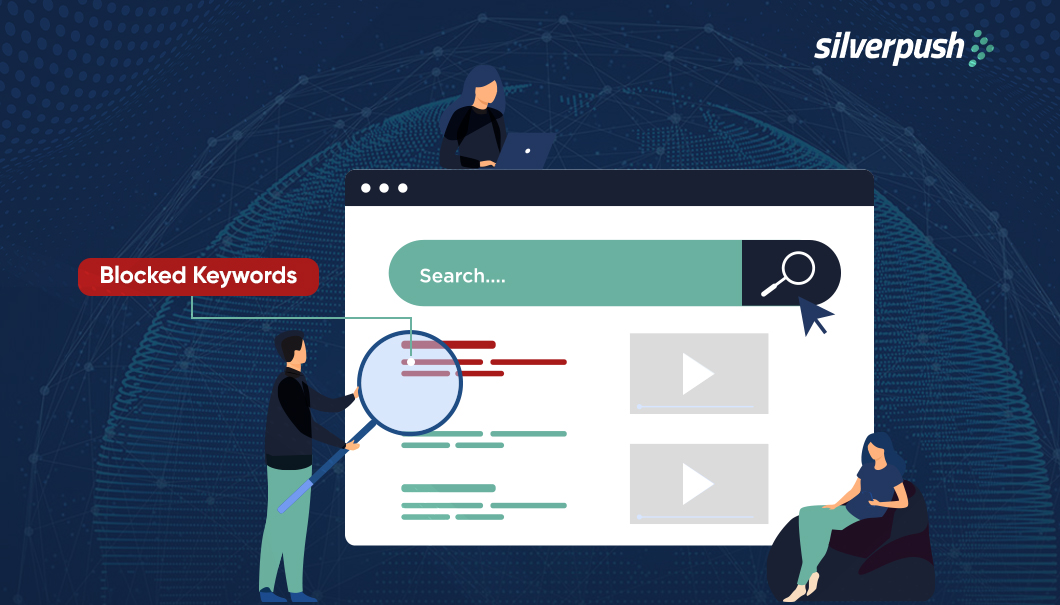
For advertisers, protecting their brand from inappropriate content is of utmost priority. When advertisements appear alongside harmful content, it has the potential to significantly damage the brand’s reputation. According to data, 54% of consumers hold a negative perception of brands that associate themselves with morally conflicting content.
This, in turn, can have a substantial impact on their advertising revenue, leading to decreased click-through rates (CTRs) for ad campaigns.
But, protecting your brand image does not equal being too restrictive with keywords or blocking keywords excessively as this can negatively impact your reach and represent a hugely wasted opportunity for both sides of the advertising ecosystem.
If your brand struggles to reach more people due to blocking too many keywords in the past, this blog is here to help. Keep reading to learn how you can avoid overblocking keywords and improve your reach.
How Keyword Overblocking is Killing Reach and Monetization Opportunities
Many advertisers employ brand safety measures to ensure their ads are not displayed alongside inappropriate content. A common example is a children’s brand ensuring their ads don’t appear next to adult-oriented material.
Another layer of protection often used by advertisers and agencies is keyword blocking. This allows them to prevent ads from being shown alongside content containing specific words. For instance, a family-friendly brand might block the keyword “porn.”
However, excessive keyword blocking can lead to a problem called overblocking. This can diminish the reach of your online ads and cause your ads to miss out on relevant searches.
Several reasons highlight why overblocking can harm your ad campaign’s effectiveness:
1. Missed Relevant Searches: Overblocking can prevent your ads from showing up for searches closely related to your target keywords. For example, if you block “free shipping,” your ads might not appear for searches like “buy shoes with free shipping.”
2. Reduced Relevance: Overblocked ads may appear for irrelevant searches, making them less appealing to the audience. This can lead to fewer clicks.
Finding the right approach to keyword blocklists doesn’t have a one-size-fits-all solution. While some keywords (e.g., “terrorist”) are clearly necessary to block, an excessive list can overly restrict your digital advertising. This can lead to less effective spending and disappointing results.
Here’s How to Make Your Advertising More Inclusive
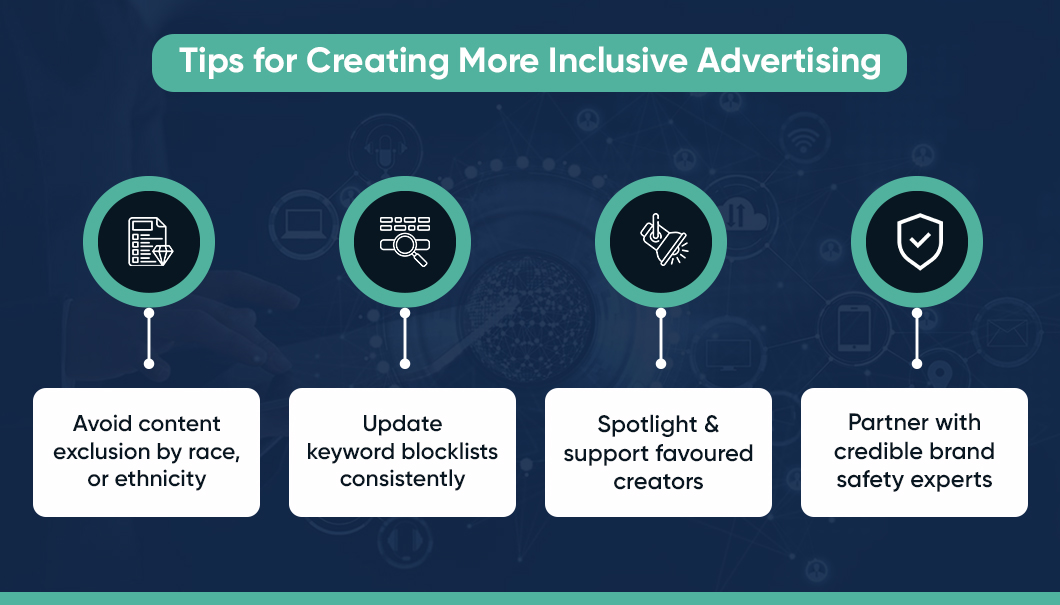
Of course, it’s important to focus our attention on brand safety. But as an industry, we need to think of new ways to implement brand safety without excluding creators based on their sexual orientation, race, or ethnicity.
The keyword blocklists that were relevant in the past might not be as effective today. Even though they needn’t be removed completely, you must regularly update them to avoid mistakenly classifying suitable content as harmful.
Ensure inclusion by amplifying preferred creators’ voices and carefully monitoring brand safety partnerships.
This final point is one we don’t see considered often enough. Working with a third-party brand safety and brand suitability partner can help with your brand safety measures.

Leverage the power of Silverpush, a leader in AI-driven contextual targeting, and its cutting-edge solution, Mirrors.
It offers custom targeting and exclusion themes to accurately identify unsafe content across a comprehensive set of brand safety categories. It ensures that only the unsafe video or page is blocked and not the entire channel or website to
Avoid over-blocking or killing reach.
This is done across multiple platforms, such as YouTube, Openweb, and Meta, using natural language processing (NLP) and semantic analysis.
Moreover, Mirrors’ Multicultural targeting approach ensures avoiding stereotypical assumptions and targets diverse audiences through inclusive and personalized ads that respect individual preferences.
It does not end here, Mirrors offers a multitude of capabilities, to know how Mirrors can effectively solve the overblocking problem and ensure your reach is uncompromised, fill out the form on your right and an expert from our team will contact you soon.
Last Words
In the advertising industry, it’s essential to embrace changes to brand safety measures to ensure that we are not excluding words, phrases or languages that could exclude minority groups. It’s time to move forward with your approaches to brand safety. When we do, we’ll be creating an online world that promotes positivity and inclusivity.


